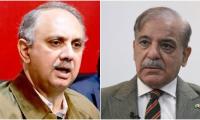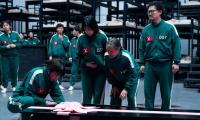the performance and quality of environment in schools. As low allocations and poor spending of non-salary budgets have direct implications for the quality of education in public schools, it not only affects implementation of effective monitoring mechanisms but also results in lags in teachers’ training regimes and, thereby, the overall learning environment.”
For the past three years, the funds allocated for current expenditure have increased successively. On the other hand, the development fund saw a slight increase in the last financial year, but it has decreased by 12 percent this year.
This reflects in the status of schools and the notorious lack of facilities. According to data provided by the Sindh Information Monitoring System, of the 47,394 schools in the province, 7,461 are without buildings, 23,241 lack electricity, 20,212 are without toilets and 23,047 schools have no drinking water.
Inefficient spending
“The largest share of the education budget goes to salaries. Most of the increase in the current education budget is accounted for in the salary component, whereas the non-salary component and development budget are neglected in terms of both, allocation and spending,” explained Ali.
“Meagre allocations for non-salary and inefficient spending patterns have a direct bearing on conducive teaching and learning environments in schools that are already confronted with a lack of basic amenities. Hence, plugging the wide gaps in educational infrastructure, especially in terms of access and gender parity, becomes even more difficult.”
This view is substantiated by the I-SAPS analysis which shows that in 2013-14, 23 percent of the overall budget remained unspent. The major share of unspent resources was in the development and non-salary components. Around 67 percent of the development budget and 53 percent of the non-salary budget was not utilised.
In fact, figures also show that over the past two years, there has been a progressive decrease in education spending in the province.
Between 2010 and 2011, 62 percent of the total education budget was used. The use of allocated resources was highest in 2011-12 with 92 percent expenditure but then decreased to 88 and 76 percent, in 2012-13 and 2013-14, respectively.
Meanwhile, there has been no major change in the expenditure of the non-salary budget since 2010, as most of the allocated resources remained unspent.
The development budget does not fare that well either, since 59 percent remained unspent in 2012-13 and 68 percent remained unused in 2013-14.
What is needed?
It is extremely important to address the disconnect between the data gathering, policy making and budget formation processes. Resource allocation needs to be linked to learning outcomes of students which have remained terribly poor, said Ali.
For this, the education budget must be in line with ground realities and appropriate allocation must be ensured.
Ali stressed the importance of presenting quarterly audits of education spending on the floor of the provincial assembly to ensure transparency and rerouting of funds to areas where they were required.
The problem will not be solved just by building more schools, commented Shereen Narejo of the planning and development department. “Giving the children a conducive environment to learn is as important,” she said, adding that the budgetary allocations did not respond to the existing problems within the system.
For example, the I-SAPS analysis also points out that the highest allocation, 39 percent, within this year’s education budget was for primary education. However, only 13 percent of the development budget was routed towards this end.
Narejo said there was a serious dearth of middle and high schools, and a lack of adequate monitoring of primary schools meant that 80 percent of children between grades 1 and 10 dropped out of school.
Eminent educationist Shahnaz Wazir Ali believed that consolidation and collation of dynamic data, along with devolving education to districts would be the way to go. “Polices do not reflect the problems because they are made too far from where they are implemented,” she said.
For his part, Sindh education minister Nisar Ahmed Khuhro told The News that the provincial education department’s Reform Support Unit (RSU) had been tasked with the responsibility of budget rationalisation.
“To introduce better planning into allocation of resources and expenditure, RSU officials have come up with various recommendations in the Sindh Education Sector Plan 2014-18,” said Khuhro.
“The provincial education department will make sure that these recommendations are gradually implemented in subsequent education budgets.”
On the other hand, officials in the RSU stated that their role was only to advise the government on certain projects. They claimed that implementation remains dependent on the secretariat’s approval, as all budget-related decisions remained the education secretariat’s domain.
An aerial view of the commercial district of Karachi. — AFP/FileFragments of PakistanThe ArtCiti gallery is hosting...
A representational image of a handcuffed man. — Pexels/FileThe District West police announced the arrest of a...
Sindh Home Minister Ziaul Hassan Lanjar in a meeting with Sindh police chief Ghulam Nabi Memon during his visit to...
Sindh police chief Ghulam Nabi Memon in a meeting with a delegation of the Rice Mills Association at the Central...
Karachi Mayor Barrister Murtaza Wahab speaks at the inauguration ceremony of a crucial road linking District South to...
Chief Justice Sindh High Court Muhammad Shafi Siddiqui taking oath from newly appointed judges, in Karachi on January...







